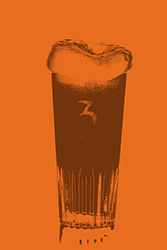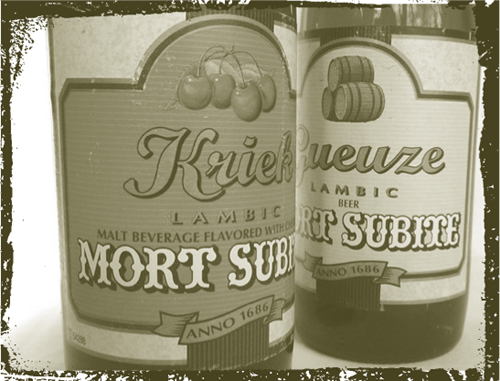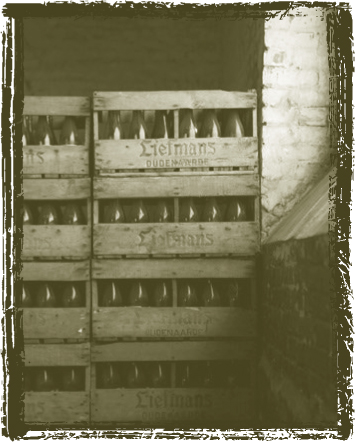

If we think of beer as a taxonomical genus, lagers and ales are the modern species. But what to do with this ancient remnant, once almost extinct—this dinosaur we call clumsily “tart,” “sour,” or “wild”? These beers are commonly identified by acidic palates, sometimes as puckery as a lemon wedge, though others may be very dry and austere. They are the most ancient beers, and they don’t fit neatly into modern categories. Made with regular Saccharomyces cerevisiae (ale) yeast, they are later compromised by wild invaders from the sky: Brettanomyces, Pediococcus, Lactobacillus. Most of the styles in this category are throwbacks to an earlier time in brewing, before we “improved” it. But in the last decade or so, some breweries have become so enamored of the bold flavors of these old styles that they’re beginning to brew new styles in the old way.
What defines tart ales are wild yeast and bacteria. These rogue microbes are the bane of modern brewing, for they produce all manner of strange compounds. Lactic and acetic acids are two of these, but the total number runs in the scores. The flavors of the resulting beer may be sour or tart but also “leathery,” “goaty,” “lemony”—and on and on. So they’re not ales exactly, and they’re not always terribly tart. And yet what else are we to call them?
At one time, all beer was inadvertently inoculated with wild yeast. Brewers didn’t understand that the mechanism of fermentation was biological or that yeast lived everywhere. Even when brewers pitched yeast recaptured from previous batches of beer, they didn’t realize that wild yeasts were settling on their cooling wort and adding their own unique characteristics. It wasn’t until Louis Pasteur conducted fermentation experiments in 1857 that the world finally understood the different agents in alcohol production (yeast) and souring (bacteria). Looking at yeast under a microscope, he saw that domestic and wild yeasts had different shapes, and soon he was able to figure out how beer went sour. Even ignorant of this fact, brewers had nevertheless made impressive strides trying to contain the souring properties of wild organisms; while some people enjoyed tart ales, even more people liked sweeter ales that hadn’t gone sour. Ale makers knew that beer would spoil in the summer (when wild yeasts and bacteria were most plentiful), and was sweet and largely unpolluted if served fresh. And lager makers kept the temperature of their beer low enough that only their specialized yeasts would work.

Mort Subite is one of only eight lambic brewers still in existence.
There were, however, some brewers who embraced the wild beasts. In eighteenth-century London, porter makers harnessed what they would later learn was Brettanomyces to make refined, vinous ales of great complexity. In Belgium, lambic makers learned how to blend different vintages of soured beer to make exceptional, Champagne-like sparkling gueuzes that remain one of the great achievements in brewing. To the west, breweries in Flanders made sweet-and-sour red ales that had the character of balsamic vinegar. Even in Germany, some breweries could be seduced to make tart summer ales as refreshing and sparkling as an Italian soda.
Sour ales are still regarded with a hearty suspicion. Some breweries won’t speak of them, and most refuse to allow them to be made in their facilities. They are perhaps not as dangerous as these breweries imagine, but wild yeasts are extremely virulent and can get into other beers if precautions are not taken. But to a minority of breweries and beer drinkers, these odd remnants of an earlier time are the very definition of sublime.

Liefmans Goudenband can be aged in the bottle for up to ten years.
Tart beers are far more complex, varied, and exotic than anything found elsewhere in the beer world. Yeasts are little chemical factories, and they pump out interesting flavors; in addition to acidifying the beer, wild yeasts and bacteria create lush, fruity esters and funky compounds. Until recently mainly the province of Belgian breweries, tart ales have begun to attract fans and converts in the United States, Italy, and beyond, where breweries have embraced the wild. This group of beers will never supplant ales and lagers, but it appears they are no longer bound for extinction, either. ■